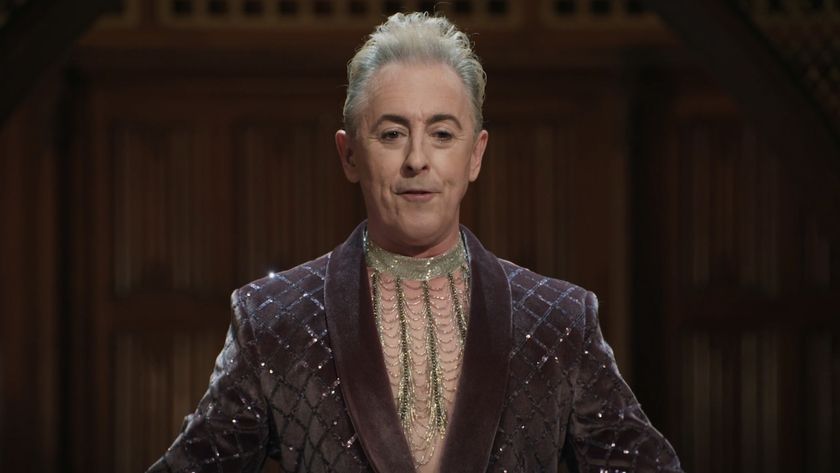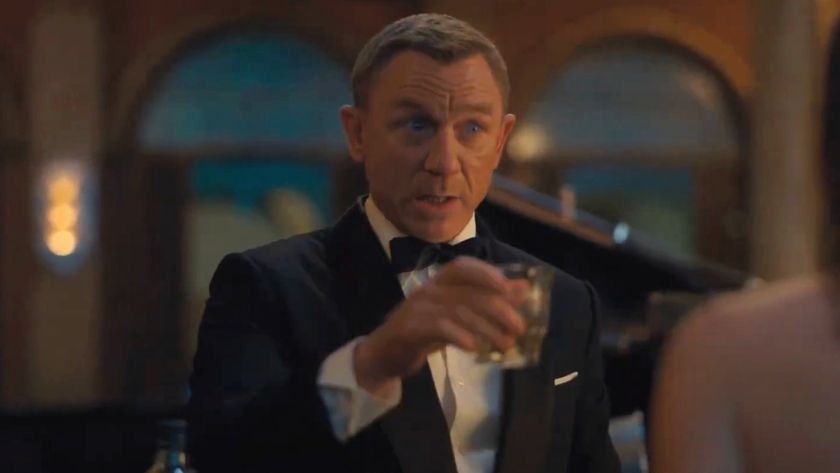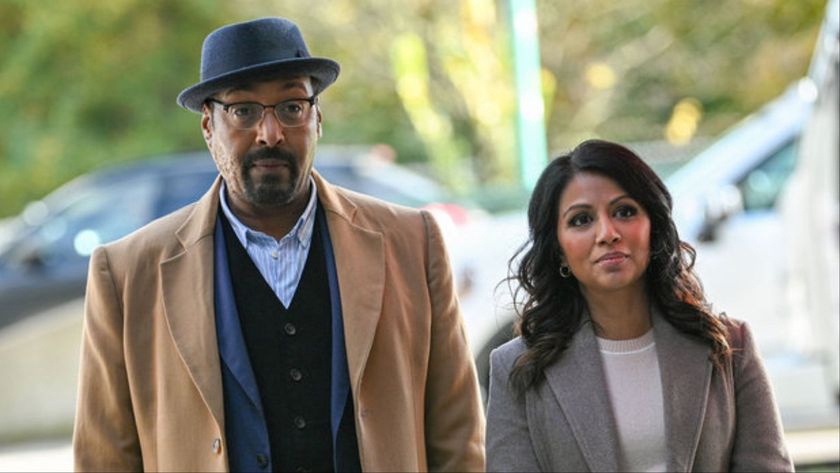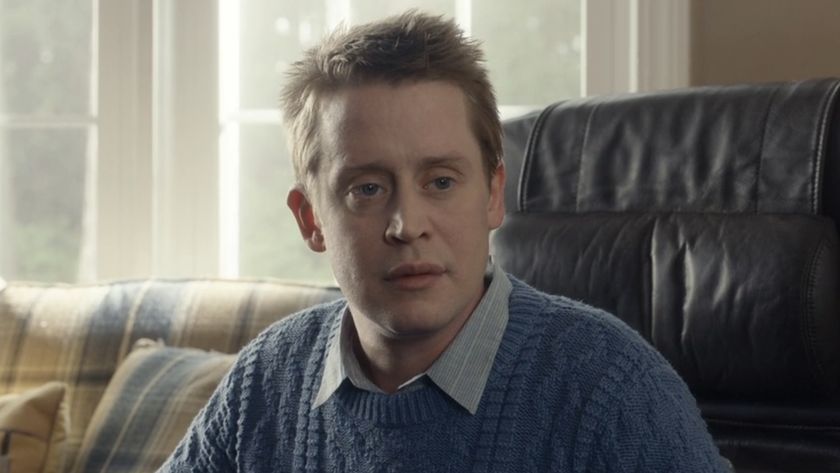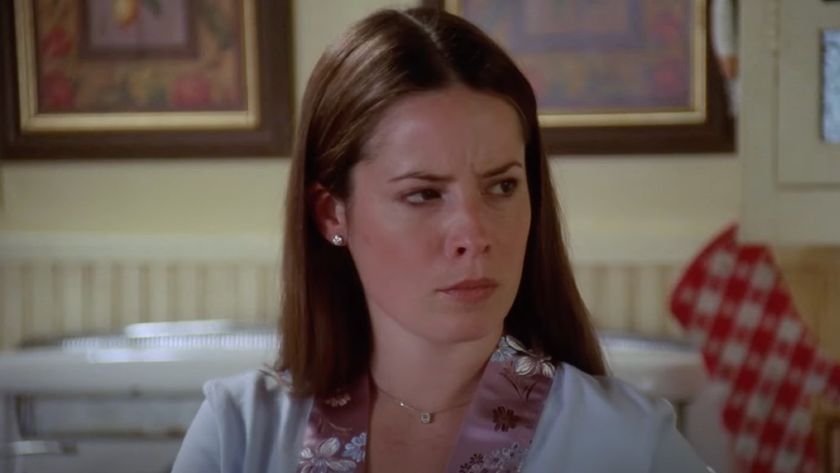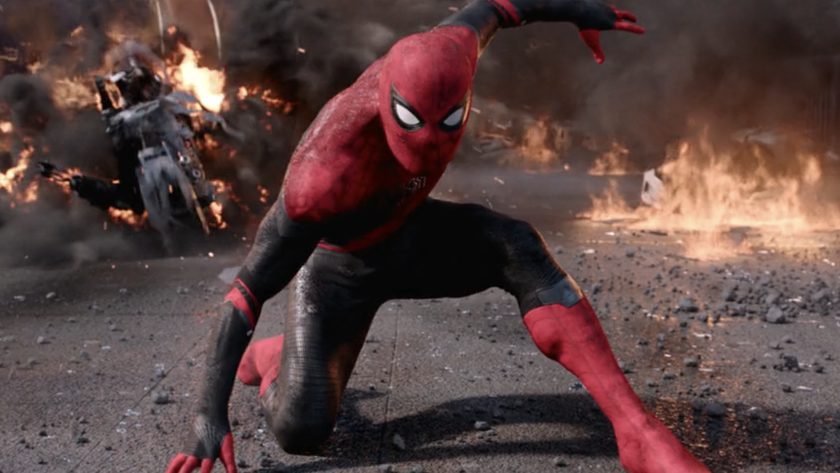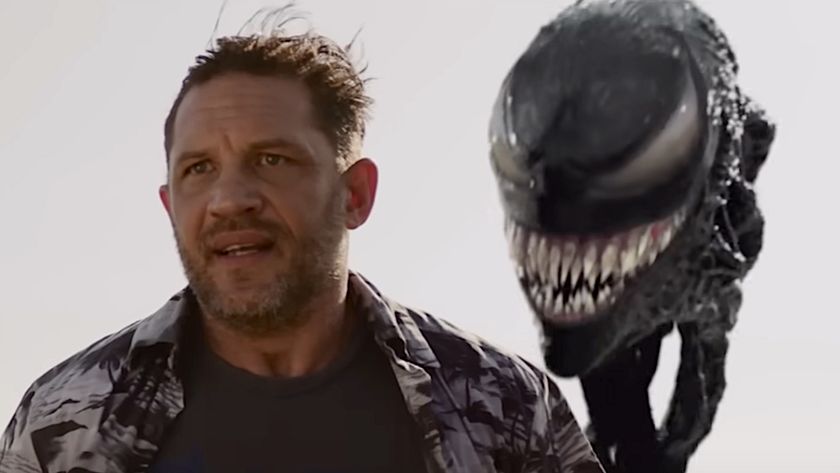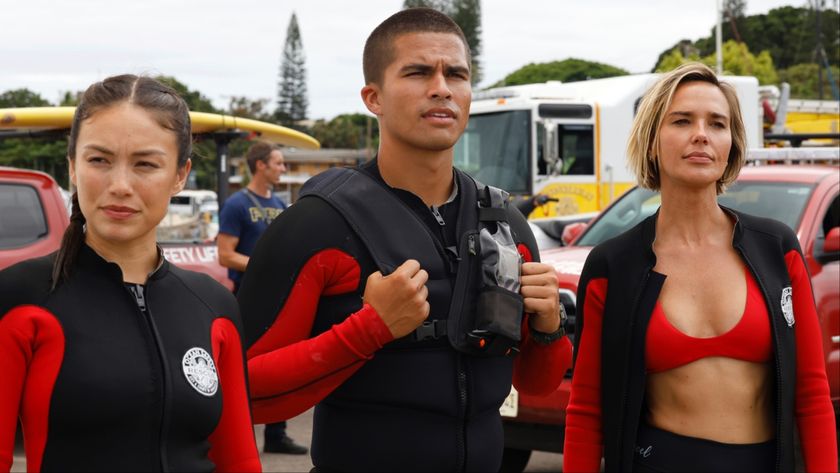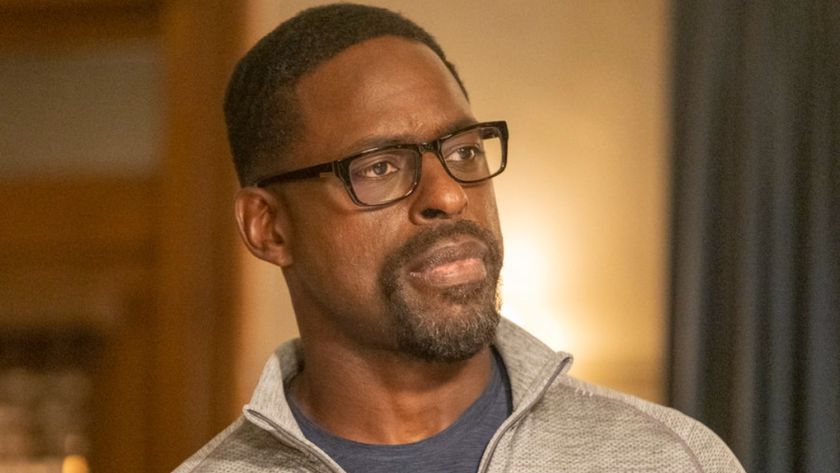How Avatar Happened: Lightcycles And Giant Lizards On The Path To Innovation

| Row 0 - Cell 0 |
Since talk of Avatar first began, it has been touted as the kind of groundbreaking cinematic experience that will change the future of filmmaking forever. Whether that is truth or the product of an out of control James Cameron ego has yet to be determined (any psychics out there?), but anyone who has already seen the film or was present for the 15-minute screening on Avatar Day can tell you that it is a step forward.
Avatar pushes computer graphics to the very edge of what's possible, particularly in IMAX 3D. Cameron's no stranger to game-changing special effects, with The Abyss he had a hand in creating first fully digital 3D water effect, in Terminator 2: Judgment Day he had the first CGI human character with realistic movement, and in Titanic he used the advanced the rendering of flowing water. Avatar may be another step, but before we take it, we're looking back on Avatar's ancestors. This is how we got here, these are the movies that made Avatar and other computer generated special effects possible. It all started right here…
The Thief of Baghdad (1940)
The First Use of Chroma Key
You know a technology is old school when the meteorologist on your local news station uses it nightly, but it was something spectacular back in 1940. Today the effect, better known as greenscreen or bluescreen, can be replicated at home with a personal computer, but it was nothing short of magical to see a horse walk on air or a 100ft giant walk on the beach back then. The tech has since advanced dramatically, thanks entirely to advances in computer power, to the point that some films don't even require sets or location shooting anymore, but more on that later.
| Row 0 - Cell 0 | Row 0 - Cell 1 |
Star Wars: A New Hope (1977) & The Black Hole (1979)
The First To Use Animated 3D Graphics
CINEMABLEND NEWSLETTER
Your Daily Blend of Entertainment News
Watching these clips now, the graphics look like the first step in today's animation, minus the further steps of adding nuisances like details. As you can see if you watch the entire Star Wars clip above, this primitive version of CGI, called wireframe models, was a painstaking process that required the animator to map out the x, y, and z axes using a pen peripheral, matte drawings and a series of dials. The graphics seen in these films provided the bedrock for today's computer generated special effects.
Tron (1982)
Extensive Use of 3D CGI
Just as you can't have a conversation about suspense without mentioning Hitchcock, you can't talk about the evolution of computer graphics without mentioning Tron. Whereas the last entry introduced animated 3D CGI, Tron was among the first movies to extensively use the new tech, containing more than 15 minutes of fully computer generated images. Want to gauge how far the film industry really has come with computer graphics since 1982? All you have to do is watch the scene posted above followed by the teaser trailer for Tron Legacy. Holy shit.
Star Trek: The Wrath of Khan (1982)
The Genesis Effect
Look how far we can go in just three years. One day we're creating black holes with green lines and arcs, the next computers are able to simulate millions of year's worth of planetary evolution in a minute. Possibly the first example of realistic computer graphic imaging, the effect was created by Lucasfilm's Computer Graphics department (now known as a small company called Pixar) and took a microscope to the minutest aspects, particularly the positioning of the stars as perceived from the camera's point of view light-years away. The scene is also the first time in film where fractal-generated landscape was used to simulate realistic terrain.
Who Framed Roger Rabbit (1988)
Realistic CGI/Human interaction
We've talked Cameron, we've talked Lucas, now it's Robert Zemeckis' turn. Already having made a name for himself with Back To The Future and Romancing the Stone (both fun films, but without computer generated challenges), the director got the job and quickly watched things escalate to out-of-control levels, seeing what was already a record budget of $29.9 million escalate to $40 million. Disney contemplated shutting the production down, but instead rolled with it, and thank God they did. Using a grand mixture of motion control technology, split screen photography, mimes, mannequins, robots, chroma key, rotoscoping, as well as impressive performances from Bob Hoskins and Christopher Lloyd, every scene involving both live action and animation is so brilliantly done that viewers begin to believe that toons do live in some small section of Hollywood. It remains strange to know that Jessica Rabbit's sequined dress was made with steel wool, a garbage bag and a flashlight. That's just magic.
Jurassic Park (1993)
Photorealistic CGI Integrated With Animatronics
Want to know how perfectly constructed the dinosaurs of Jurassic Park were? They were able to make a seven year-old boy, who up to that point was obsessed with dinosaurs, never want to look at one again. While not 100% biologically accurate in retrospect, Steven Spielberg's film about rampaging prehistoric creatures was an absolute marvel that exploded in theaters nationwide to the tune of $365 million, currently the 14th all time best performer in America. Stan Winston, who reached fame with his work on Cameron's Terminator films, created the animatronic dinosaurs with latex skins and used CGI to make them move. Even after 17 years it still looks damn good.
Toy Story (1995)
First Feature Film To Use Only Computer-Generated Imagery
Up until this point, computer graphics were almost exclusively being used to make live-action feature films look better. Animation was still being done in 2D and largely by hand. Then a man named John Lasseter showed up and decided to blow everyone away. The story was simple enough: a cowboy and a space ranger fight for the love of their owner, but it was Lasseter's short film Tin Toy that got everyone at Disney interested. Go forward 14 years and Pixar has created 10 entirely computer animated films, with four of them winning the Academy Award for Best Animated Feature and their most recent, Up, possibly looking at a Best Picture nod. Oh, and seven entirely computer generated films take up spots on the 50 top grossing films of all time list, with Shrek 2 holding the number four slot. That's influential.
The Matrix (1999)
Bullet Time
Despite what some would have you believe, movies are, in fact, not magical. Try as hard as you want, you can not get a camera to move around a track at 700mph without breaking it. But that's what makes “bullet time” so damn cool. Using multiple cameras located on an arc around the scene (which is actually a greenscreen), the cameras are timed right after one another, giving the appearance of slow motion (see a quick version of it here. While this effect had been used previously in feature films (the first time was in Blade), it was the use of interpolation software that allowed the Wachoskis to insert CGI frames to make the motion more fluid. Not only does it look incredibly cool, but it has become a reference point for dozens of action movies and video games since.
Final Fantasy: The Spirits Within (2001)
Photorealism and Live Action Principals In An All Digital Feature Film
Just to erase it as a point of discussion: yes, this film was a box office bomb, making back less than a quarter of its budget. But it still does mark an achievement in computer generated effects. While Pixar and Dreamworks have created films with human characters (The Incredibles, Shrek, etc), they have never been photorealistic, always using exaggerated features that keep them stuck in the cartoon world. That was not the goal for Final Fantasy: The Spirits Within. Instead, animators strived to make each human character look like they walked out of a photograph. Obviously there are some drawbacks, as computers simply haven't advanced to that power necessary to do that just yet, but it is an admiral goal and one worth striving for. Final Fantasy should be remembered not for its box office performance, but for the way it tried to push the technology envelope.
Lord of the Rings Trilogy (2001-2003)
Artificial Intelligence For Digital Characters and Photorealistic Motion Capture
Some may argue that the Lord of the Rings trilogy was overlong and boring, but one cannot argue that the scope of Peter Jackson's epic was anything short of breathtaking. In no place is this better shown than when viewing the movie's massive orc army. Obviously, Jackson could not have hired the 100,000 extras that would have been necessary to fill out the army's ranks, so, they did the next best thing: they made digital orcs with brains. Using a software called MASSIVE (an acronym for Multiple Agent Simulation System in Virtual Environment), he was able to not only stay true to the source material, but also had thousands of orcs at his disposal for the low, low price of $0.
And, of course, we can't forget Gollum. With Andy Serkis' performance at its base and some incredible digital work done with the footage, Gollum is an absolute achievement in motion capture. Never before had a mocap character possessed this level of photorealism, proving that the technology was there for our next entry.
The Polar Express (2004)
First Feature Film With All Motion Capture Characters
Ok, maybe not 100% ready. But we are getting there. Zemeckis has since made two more entirely motion capture films and plans on making even more, but it was The Polar Express that started it all. While the film raked in $162 million at the box office, it met with some criticism thanks to what is known as “The Uncanny Valley” - the point where being too-human-but-not-human becomes an issue and creeps everybody out. Zemeckis' efforts since, Beowulf and this year's A Christmas Carol, have improved in this area and the technology will likely only get better as computers get more powerful.
Immortel (ad vitam), Casshern, Sky Captain and the World of Tomorrow, and Sin City (2004-2005)
Use of The Digital Backlot
Remember how I said we'd get back to chroma key? Well, here it is. While it's not precisely known which movie did it first, Immortel (ad vitam), Casshern, Sky Captain and the World of Tomorrow, and Sin City were all made using the same filming technique: replacing on-location shooting and soundstages with an all-greenscreen backdrop. In addition to the incredible cuts in cost that come with not having to build expansive sets, the tech also allows the director complete control over what he or she wants to see, simply by editing the backdrop in post production. Technology has literally gotten to the point where all you need to make a film are actors.
Avatar (2009)
Photorealistic Motion Capture Using Virtual Camera System, and Facial Expression Cap Cameras
We have officially arrived at the here and now. Researching for this article, the most impressive thing I have found is that Cameron had the patience and the wherewithal to wait for the proper technologies to film Avatar right, and from the looks of it, it was the best move he could have made.
First and foremost he used photorealistic motion capture, which I mentioned earlier in regards to Gollum in The Lord of the Rings. This would be old hat if not for the virtual camera system that Cameron used during filming. During scenes with the Na'vi, instead of simply filming the actor's motions and adding the digital effects in post-production, the system, created by Cameron and a group of experts, allowed Cameron to watch on a monitor how the characters, as they would appear in the film, would react with the digital surroundings and direct them as such.
The second innovation used by Cameron for the film is a rig, which he describes as a small skull cap that hangs a camera in front of the actors face. As the actor performs, the camera transmits facial movements which are then put on the virtual characters. This results in more of the actor coming through the character than ever seen before in motion capture.

Eric Eisenberg is the Assistant Managing Editor at CinemaBlend. After graduating Boston University and earning a bachelor’s degree in journalism, he took a part-time job as a staff writer for CinemaBlend, and after six months was offered the opportunity to move to Los Angeles and take on a newly created West Coast Editor position. Over a decade later, he's continuing to advance his interests and expertise. In addition to conducting filmmaker interviews and contributing to the news and feature content of the site, Eric also oversees the Movie Reviews section, writes the the weekend box office report (published Sundays), and is the site's resident Stephen King expert. He has two King-related columns.
